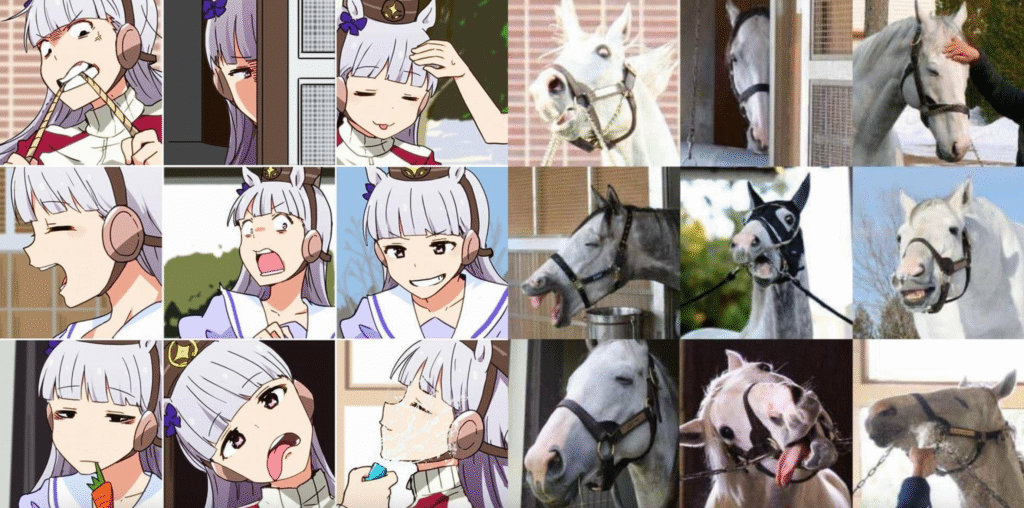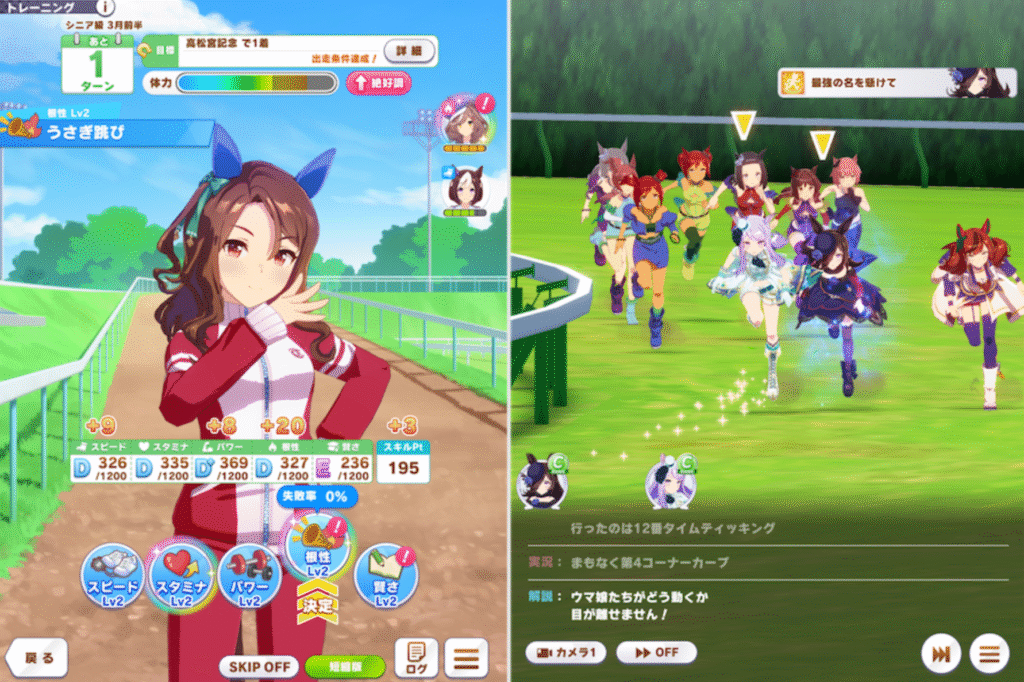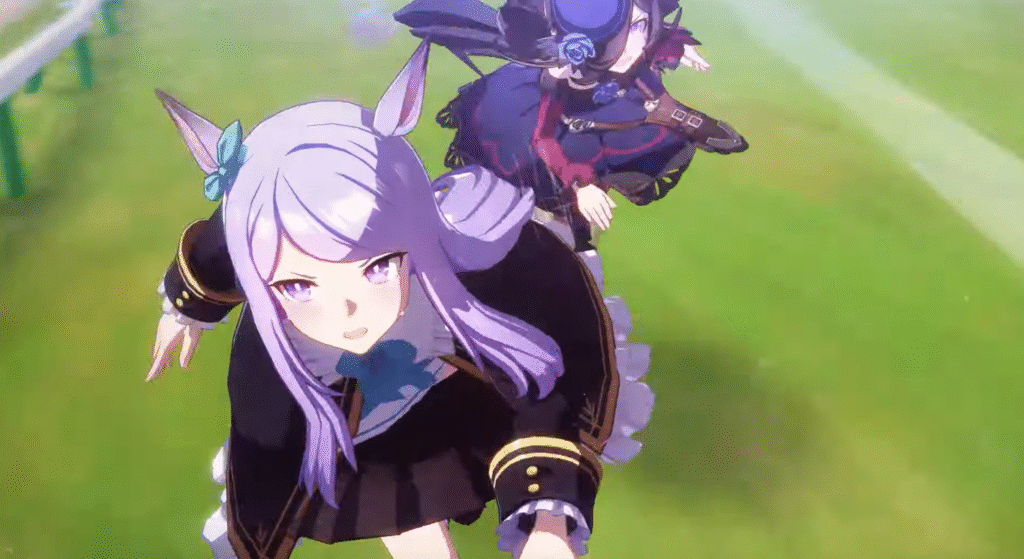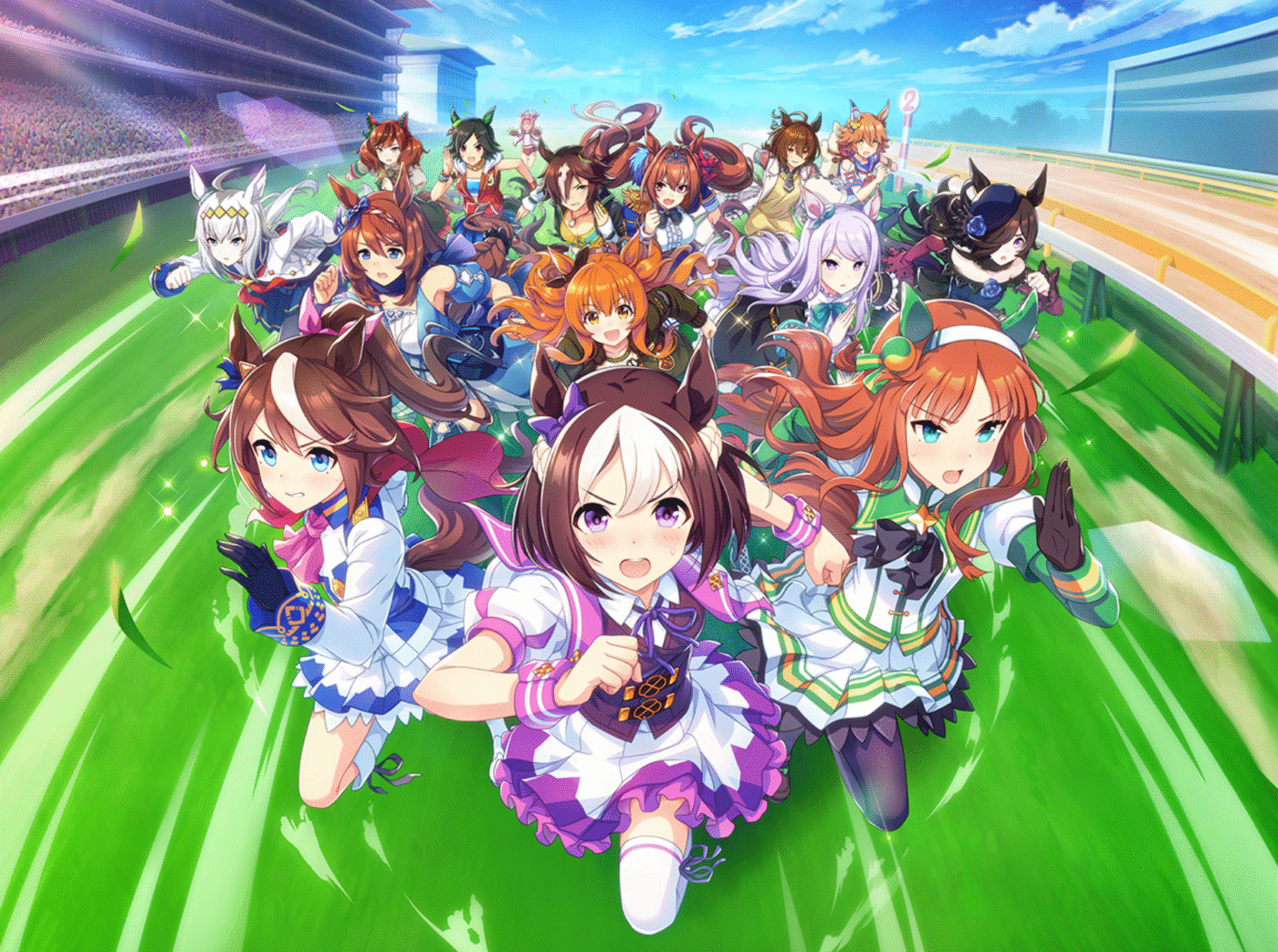Memoroar Imagine a pitch that, on paper, sounds completely absurd: cute anime girls, complete with horse ears and tails, who are actually the reincarnations of legendary, real-world racehorses. They train at a prestigious academy not just to be the fastest racers, but also to become idols who perform on stage after every victory. This concept,
Uma Musume Pretty Derby, should have been a niche product for a handful of dedicated fans. Instead, the exact opposite happened. The franchise has exploded into a massive cultural phenomenon, generating billions in revenue and reshaping the industries it touches.
Since its mobile game launch in Japan in February 2021, Uma Musume had already grossed over $2.6 billion by the time of its global launch in June 2025, making it one of the most profitable mobile games in the world. This staggering financial success is only one part of the story. Behind it lies a masterclass in cultural adaptation, innovative genre-blending, and respectful storytelling. Its meteoric rise, especially after its global launch, has sparked a new wave of fans who have fallen in love not just with the characters, but with the sport of horse racing itself—an almost unheard-of effect.
This report will answer the central question: how did such a strange and unique premise not only conquer the competitive Japanese market but also capture the attention of the global market? The answer is no accident.
Uma Musume’s success is the result of a carefully calculated formula. The concept that initially sounded bizarre became its main draw, a powerful marketing hook that stood out in a sea of uniform games and anime. This uniqueness made it incredibly friendly for streamers, whose curiosity drew in thousands of viewers to see “what is this weird game.” But once viewers were in, they were treated to high production quality, emotional depth, and a profound respect for its source material, effectively subverting initial expectations. This “uniqueness-to-substance” pipeline is the engine of its viral spread.
This report will dissect the Uma Musume phenomenon in depth, from its cultural roots in Japanese pop tradition, its creative formula blending history with fiction, its tangible real-world impact, to the unique dynamics of its now-global fan community.
Part 1: Deconstructing the “Horse Girl” – The Modern Evolution of Gijinka

To understand why Uma Musume resonates so deeply, we must first understand that its concept is not an idea born in a vacuum. It is the culmination of a long tradition in Japanese pop culture known as moe anthropomorphism or gijinka. However, Uma Musume doesn’t just follow this trend; it elevates it to a whole new level, turning an artistic trope into a medium for biographical storytelling.
The Tradition of Moe Gijinka
Moe anthropomorphism (萌え擬人化, moe gijinka) is an artistic practice where non-human entities—be it animals, inanimate objects, abstract concepts, or phenomena—are given a human form, usually in the shape of a cute and adorable (moe) anime character. This practice is extremely common in
otaku subculture and has produced a wide variety of unexpected characters.
Examples are incredibly diverse and show just how flexible the concept is. There’s Kantai Collection, which turns historic warships into young girls; Hetalia: Axis Powers, which personifies the world’s nations; and Cells at Work!, which depicts human body cells as busy office workers. The trend even extends to more abstract things like computer operating systems (OS-tans), console hardware, and even coconut shell charcoal (
Binchō-tan). The appeal of
gijinka often lies in the humor that arises from the arbitrariness of giving personalities to these objects, a form of creative play that has long been a part of fandom.
Uma Musume’s Innovation: From Personification to Biography
This is where Uma Musume takes a different and innovative path. While many other gijinka works use the source object merely as a loose aesthetic theme for a completely new character, Uma Musume does the opposite. The franchise fundamentally shifts the purpose of gijinka from mere satirical or aesthetic personification to a form of dramatization and historical preservation.
Instead of creating original characters that just “look like” racehorses, each horse girl in Uma Musume is a deeply researched biographical study of a legendary real-world racehorse. Their personalities, backstories, running styles, and even their fates in the main storyline directly reflect the careers and characteristics of their real-life equine inspirations. The source objects—the actual racehorses—already come with rich narratives: heroic victories, tragic defeats, fierce rivalries, and heartbreaking injuries.
The gijinka characters in Uma Musume are not new creations, but rather “vessels” for retelling that historical drama. The anthropomorphism here serves to make the stories from the racetrack more accessible and emotionally resonant for a modern anime audience. Thus, the franchise isn’t just “turning horses into cute girls,” but using the popular visual language of anime to create living monuments to sports legends.
This attention to detail is extraordinary. Fans quickly discovered clever design cues that connect the girls to their original horses. For example, socks or shoes of different colors on each leg represent the color patterns on the real horse’s legs. Accessories worn on their ears—like ribbons or earrings—serve as markers for the real-life horse’s gender; an ornament on the left ear signifies a mare, while one on the right signifies a stallion. Even in its world-building, Cygames shows a deep commitment to the premise. In the world of
Uma Musume, the kanji for “horse” (馬) is canonically altered to have only two “legs” at the bottom instead of four, to reflect that the “horses” in this world are humanoid girls.
This approach deepens the player’s emotional investment far beyond that of a typical gijinka project. Players aren’t just getting attached to fictional characters, but to the real legacies they represent.
Part 2: The Winning Formula – A Trifecta of Gameplay, Narrative, and Spectacle

The phenomenal success of Uma Musume doesn’t just rely on its unique concept, but also on its brilliant mechanical execution. The game successfully blends three distinct genres—training simulation, sports drama, and idol culture—into a single, addictive, and broadly appealing gameplay loop. This fusion is no accident; it’s a deliberate design strategy to create a “perfect storm” of player engagement, where the strengths of each genre are used to cover the weaknesses of the others.
The Core Loop: A Roguelike Training Simulation
At the heart of the Uma Musume experience is its main game mode, which is best described as a “roguelike training simulation.” Players take on the role of a Trainer tasked with guiding a single chosen horse girl through her entire racing “career,” from debut to retirement. The game uses a turn-based management system, where each “turn” on the calendar represents one week of training. Players must make strategic decisions: whether to train a specific stat, rest the horse girl to recover energy, take her to the infirmary to heal ailments, or enter her into a race.
Each training session or “career” is unique. The results of each training session, the random events that pop up, and even the horse girl’s condition vary every time you play, providing a very high degree of replayability—a hallmark of the roguelike genre. The strategic depth lies in the five core stats: Speed, Stamina, Power, Guts, and Wit. Each of these stats plays a crucial role in the race, and balancing them according to the race distance and the horse girl’s running style is the key to victory. This is not a game that can be won just by mashing buttons; it demands careful planning and adaptation to ever-changing situations.
This gameplay loop is universally praised for being genuinely fun and engaging, a key differentiator from many other gacha games where the gameplay often feels like a chore or a mere formality. The common problem of predatory and luck-dependent gacha games is mitigated. In
Uma Musume, using gacha results becomes strategic and skill-based. A well-trained low-rarity character can easily defeat a poorly trained rare character, rewarding player skill over mere spending.
A Spectacular Spectacle: Blending Sports Drama with Idol Culture
Uma Musume seamlessly blends the tension of sports drama with the pageantry of idol culture, creating a satisfying spectacle. The dual identity of the characters as both racers and idols is central to this appeal.
The race sequences are depicted with dynamic and energetic 3D animation, complete with realistic live commentary that successfully captures the “hype” moments of a real competition. The feeling of tension as you watch the horse girl you’ve painstakingly trained manage to overtake a rival in the final seconds to snatch a victory is one of the game’s main draws.
But victory doesn’t end at the finish line. After each race, the top three horse girls perform in a J-pop concert called a “Winning Live.” This provides a festive and celebratory reward, while also integrating the idol culture that is a major pillar of Japanese entertainment. This blend overcomes the potential weakness of a sports simulation genre, which can become dry and overly focused on stats. With the idol concerts, every victory feels more spectacular and emotionally satisfying.
The Engine: A “Generous yet Strategic” Gacha System
As the engine for its content, Uma Musume uses a gacha system, where players use in-game currency to randomly “pull” for new horse girl characters and, more importantly, “Support Cards.” These Support Cards are crucial because they provide stat bonuses, new skills, and special training events that are essential for a successful training session.
Despite being a gacha game, Uma Musume is considered relatively generous compared to many similar games. Players can earn a decent amount of premium currency through gameplay, and the game has a “pity” or “spark” system that guarantees players a top-rarity (SSR) item after a certain number of pulls, reducing the frustration of bad luck. The focus isn’t just on pulling the rarest characters, but on building a strategic team of Support Cards to maximize the potential of each horse girl.
This system cleverly feeds the roguelike gameplay loop. Getting a new character or a powerful Support Card gives players a strong reason to start a new “career run” to test out new combinations, keeping the gameplay cycle going. Even if a career run fails, players still make long-term progress in the form of bond points or leveling up characters and cards, meaning the time spent is never truly wasted. This addresses a common problem in the roguelike genre where a bad run can feel like a waste of time. In this way,
Uma Musume creates a highly resilient and engaging gameplay loop for various types of players: from strategists who love to maximize stats, to players focused on the emotional story, to streamers looking for hype moments.
Part 3: The Soul of the Story – Weaving Horse Racing History into Legend
The most powerful and unique element of Uma Musume is its ability to adapt real Japanese horse racing history in a way that is creative, deep, and full of respect. This isn’t just a passing reference; it’s the foundation of the entire franchise’s narrative. Its narrative strength comes from its ability to function on two levels simultaneously: as an engaging sports anime for newcomers, and as a rich, layered “historical fiction” for those who know the real stories behind it.
A Pact of Respect: Securing the Legacy
The first and most crucial step that sets Uma Musume apart was the decision by Cygames, spearheaded by its president and avid horse racing fan, Susumu Fujita, to formally request permission from the horse owners, farms, and related representatives to use their horses’ names and likenesses. This was a breakthrough. In Japanese horse racing culture, a horse’s name and legacy are considered sacred, and previous games had often used these names without clear permission.
This process was more than just a legal formality. Cygames worked with the owners to get approval for character designs and storylines, ensuring that their portrayals remained respectful of the original horses’ legacies. This good relationship is the lifeblood of the franchise. Without the trust and cooperation of the horse racing community,
Uma Musume would not exist.
Case Studies in Adaptation
The way the franchise translates history into story is best seen through specific examples:
- Haru Urara: The beloved loser. Her character is based on a real racehorse famous for never winning a single one of her 113 races, but adored by the public for her never-say-die spirit. In the game and anime, Haru Urara is portrayed as a cheerful, optimistic girl who finds happiness in running itself, not in winning. Her story becomes a symbol that success can be found beyond the winner’s podium. Her explosive popularity in the game even led to a “second popularity boom” for the real, now-retired Haru Urara.
- Tokai Teio: The brilliant but fragile champion. The second season of the anime centers on her story, which accurately mirrors her real-life counterpart’s career: a series of spectacular victories punctuated by several severe, career-threatening injuries. This creates a powerful drama about perseverance, comebacks, and the struggle against physical limitations.
- Silence Suzuka: The tragic front-runner. The anime faithfully depicts her dominant running style and the leg fracture that tragically ended the real horse’s career at the height of her powers. But this is where the power of fictional adaptation shines. The anime offers a “what if” scenario, where Silence Suzuka fictionally manages to recover and race again. For fans who know the sad true story, this moment provides incredible emotional catharsis.
- Gold Ship: The chaotic genius. Based on a horse famous for being brilliant but incredibly unpredictable and difficult to manage. Her personality in the game is portrayed as eccentric, prank-loving, and wild, directly reflecting the real horse’s behavior on the track. The real Gold Ship’s owner even claimed that the horse’s real-life behavior was “wilder” than what was depicted in the anime.
This adaptation process creates a powerful feedback loop. A new player can enjoy the Uma Musume story as a classic, standalone sports tale. However, the game and its community constantly provide clues that there is a deeper reality. This sparks curiosity. Players start researching the history of the real racehorses—a phenomenon evidenced by the 800% spike in Google searches for these horses’ names after the game’s launch.
With this new knowledge, the viewing or playing experience becomes much richer. Every scene now has a dual meaning. A victory feels more heroic, a defeat more poignant, and a fictional scenario like Silence Suzuka’s recovery becomes incredibly powerful because the player knows the tragic reality. This dual-layered narrative structure creates a unique form of interactive storytelling. It doesn’t just tell a story; it curates a historical experience and invites its audience to become amateur historians of the sport, creating a powerful synergy between the virtual product and its real-world inspiration.
From Paddock to Persona – Adapting Real Horses into Uma Musume
Haru Urara
Haru Urara (1998-2004)
Beloved for her spirit despite losing all 113 of her races. A symbol of perseverance.
A cheerful and perpetually positive character. Her story focuses on the joy of running and friendship, not victory.
Gold Ship
Gold Ship (2011-2015)
Brilliantly talented but unpredictable and often behaved erratically on the track (e.g., refusing to start).
An eccentric and prank-loving personality. Her unique skills in the game can be unreliable, mirroring her real-life nature.
Tokai Teio
Tokai Teio (1990-1993)
An incredibly talented champion whose career was plagued by a series of severe, recurring injuries that forced multiple comebacks.
The main plot of Season 2 centers on her struggle to overcome repeated injuries and self-doubt to return to the top.
Silence Suzuka
Silence Suzuka (1997-1998)
A dominant front-runner. Her career was tragically cut short by a leg fracture while leading a major race.
The anime depicts the injury but provides a fictional “what if” storyline where she successfully recovers and races again, offering catharsis for fans.
Part 4: The Ripple Effect – Uma Musume’s Impact Beyond the Screen

The influence of Uma Musume extends far beyond the digital world. The franchise has created real shockwaves in the real world, generating incredible financial success and, more importantly, forging a symbiotic and mutually beneficial relationship with the Japanese horse racing industry. This phenomenon shows a rare and powerful example of how virtual entertainment can revitalize a traditional physical industry.
A Financial Behemoth
The numbers speak for themselves. Uma Musume Pretty Derby is a money-making machine. As of March 2024, the game had generated over $2.4 billion in revenue. This figure jumped to $2.6 billion by the time of its global launch in June 2025. To provide context, the game was the highest-grossing mobile game in Japan in 2021 and 2022. Before its global expansion, over 90% of its total revenue came from the domestic Japanese market, showing just how deep a grip the phenomenon has in its home country.
Its peak monthly revenue occurred in its first month of launch, March 2021, with a fantastic $125.4 million. Although domestic revenue saw a gradual decline in the following years, the numbers remained extremely high. The global launch in 2025 was a strategic move by Cygames to tap into new markets and offset the declining trend in Japan, a gamble that paid off with its explosion in popularity in the West.
The “Uma Musume Effect”: Revitalizing a Sport
The most significant and perhaps most surprising impact of Uma Musume is its positive effect on the real horse racing industry, a phenomenon dubbed by the Japanese media as “Uma Musume-ka” or the “Uma Musume-ification” of the horse racing fandom.
- Increased Fan Engagement: The Japan Racing Association (JRA) and various media outlets reported a significant spike in race day attendance, sales of official horse merchandise, and online engagement that coincided with the franchise’s popularity.
- Demographic Shift: Traditionally, horse racing fans have tended to be older. Uma Musume has successfully attracted a new, much younger generation—teenagers and adults in their 20s, including a large number of women—to the sport, breathing fresh life into the industry.
- Fan Pilgrimages: Statues of legendary horses located at racetracks, such as the statue of Special Week at Tokyo Racecourse, have turned into pilgrimage destinations for game fans wanting to take a photo with the “real form” of their favorite characters. Fans even visit the farms where retired horses like Haru Urara live, prompting Cygames and the farms to release respectful visitation guidelines.
- Economic and Labor Boost: The impact is not just cultural, but also economic. The franchise has prompted fans to make significant donations for the care of retired racehorses. Even more astonishingly, it has inspired many young people to pursue careers in the horse industry. One report noted that more than half of new job applicants at horse farms in Japan were inspired by Uma Musume.
This relationship has created a powerful and mutually beneficial economic and cultural flywheel. The cycle works as follows: someone plays the game or watches the anime, then becomes emotionally attached to a particular character. This attachment sparks curiosity about the real-life racehorse, prompting them to do research. This deeper emotional investment can lead to in-game spending to acquire or train that character, which generates revenue for Cygames.
Next, fans who now feel a connection to the sport might start taking real-world actions: attending races (increasing JRA revenue), buying official horse merchandise, or even donating to horse charities. This injects new energy and money into the horse racing industry. This revitalized interest, in turn, creates more stories and goodwill, making it easier for Cygames to get permission to use the names of new horses, allowing them to create new content that attracts new players, and the cycle repeats. This is a perfect example of “transversality,” where the crossing of boundaries between the virtual and physical worlds creates powerful new dynamics and value for both.
Part 5: The Global Sprint and Community Stewardship
The explosion of Uma Musume’s popularity on the international stage in mid-2025 was not a coincidence, but rather the culmination of a long-prepared strategy and a perfectly timed cultural moment. This global success, combined with the unique dynamics of its fan community, offers a fascinating case study in how a very “Japanese” cultural product can cross borders and how a fandom can become a partner in preserving a franchise’s longevity.
Conquering the West: The Role of Localization and Streamers
The main trigger for Uma Musume’s popularity explosion in the West was its simultaneous global launch on iOS, Android, and Steam platforms on June 26, 2025. For the first time, audiences outside of East Asia could easily access the game in English. The response was overwhelming and immediate. On Steam, the game quickly achieved an “Overwhelmingly Positive” review rating, a strong indicator of enthusiastic player reception.
However, the factor that most accelerated its spread was its adoption by major streamers on platforms like Twitch. Big names like Ludwig, Northernlion, and Asmongold, who have a combined audience of millions, most of whom are not traditional anime or gacha fans, tried the game out of curiosity. The combination of a “weird” concept with gameplay that turned out to be incredibly fun and full of tense moments made it perfect content for streaming. These streamers acted as unintentional ambassadors, demystifying the game’s premise and showcasing the universal appeal of competitive drama and heartwarming stories.
The Fandom: From Doujinshi to Self-Policing
Like many other popular anime franchises, Uma Musume has a very active fan community that creates derivative works, such as fan art and self-published comics (doujinshi). Its massive rise in popularity coincided with the post-pandemic period when major conventions like Comiket were being held again, creating an explosion of long-suppressed creativity.
However, the Uma Musume fan community operates under a unique set of rules. Cygames, after consulting with the horse owners, has established very specific guidelines for fan-made content. These guidelines explicitly prohibit the creation and distribution of content containing violent, grotesque, or sexual elements, as well as any content that could damage the image or reputation of the real racehorses and their owners.
The motivation behind these rules is not the usual corporate desire to control a brand. It is an absolutely necessary measure to maintain good relations with the horse owners, whose permission is the lifeblood of the franchise. The real threat is not a lawsuit from Cygames, but the possibility that horse owners will revoke the rights to use their horses’ names if they feel their legacy is being disrespected. This would effectively “kill” the character in the game, erasing them from digital existence.
Interestingly, the vast majority of the fan community is well aware of these rules and actively respects them. There is a high level of self-policing within the fandom, where fans remind each other to protect the franchise they love. This creates a fandom culture that feels more “wholesome” and respectful compared to many other
gacha games where explicit content is often commonplace.
This dynamic creates a unique form of what could be called “community co-stewardship.” The relationship in the Uma Musume ecosystem is not just a two-way street between producer and consumer. It is an interdependent triangle: Cygames ↔ Fans ↔ Horse Owners. Cygames needs permission from the horse owners to create content for the fans. The horse owners need assurance that their horses’ legacies will be treated with respect by Cygames and the fans. The fans, in turn, understand that to continue enjoying the characters and stories they love, they must help maintain that honor.
Thus, these fan content guidelines transform from a mere restrictive end-user license agreement into a shared social contract. The fan community becomes a de facto partner in the franchise’s ongoing diplomacy. This is a creator-fan relationship that is far more complex and interdependent than that found in almost any other major media franchise.
Conclusion: More Than Just a Game – A New Blueprint for Cultural Adaptation
The journey of Uma Musume Pretty Derby from an impossible-sounding concept to a multi-billion-dollar global cultural phenomenon is an extraordinary story. However, its success is not a miracle or a coincidence. It is the result of a brilliant execution of a formula built on a foundation of deep respect, clever genre innovation, and a keen understanding of the power of community.
The franchise has proven itself to be more than just a successful game or a popular anime. It is a blueprint, an important case study for the modern entertainment world on how to adapt real-world heritage creatively and respectfully into globally successful entertainment.
This analysis has shown that the success of Uma Musume is supported by several key pillars:
- The Evolution of Gijinka: Uma Musume elevates the tradition of moe anthropomorphism into a tool for biographical storytelling and historical preservation, providing narrative depth and emotional weight far beyond the usual trope.
- A Perfect Genre Blend: Its gameplay loop is a design masterpiece that blends training simulation, sports drama, and idol culture to create a “perfect storm” that appeals to various types of players and covers the weaknesses of each genre.
- Real-World and Virtual Synergy: The “Uma Musume Effect” demonstrates a strong and positive symbiotic relationship between digital entertainment and a traditional industry. It offers a powerful model of how pop culture can revitalize and enrich physical cultural heritage.
- Community Partnership: Its unique fan content management model has created a form of “co-stewardship,” where fans become active partners in maintaining the delicate diplomatic balance that allows the franchise to exist.
In the end, Uma Musume Pretty Derby proves that with genuine passion, deep respect for the source material, and boundless creativity, even the most unlikely concept can cross the finish line as a true champion. It has created a legacy that not only honors the past of horse racing legends but also builds a bright and dynamic future for fans around the world.





Leave a Comment